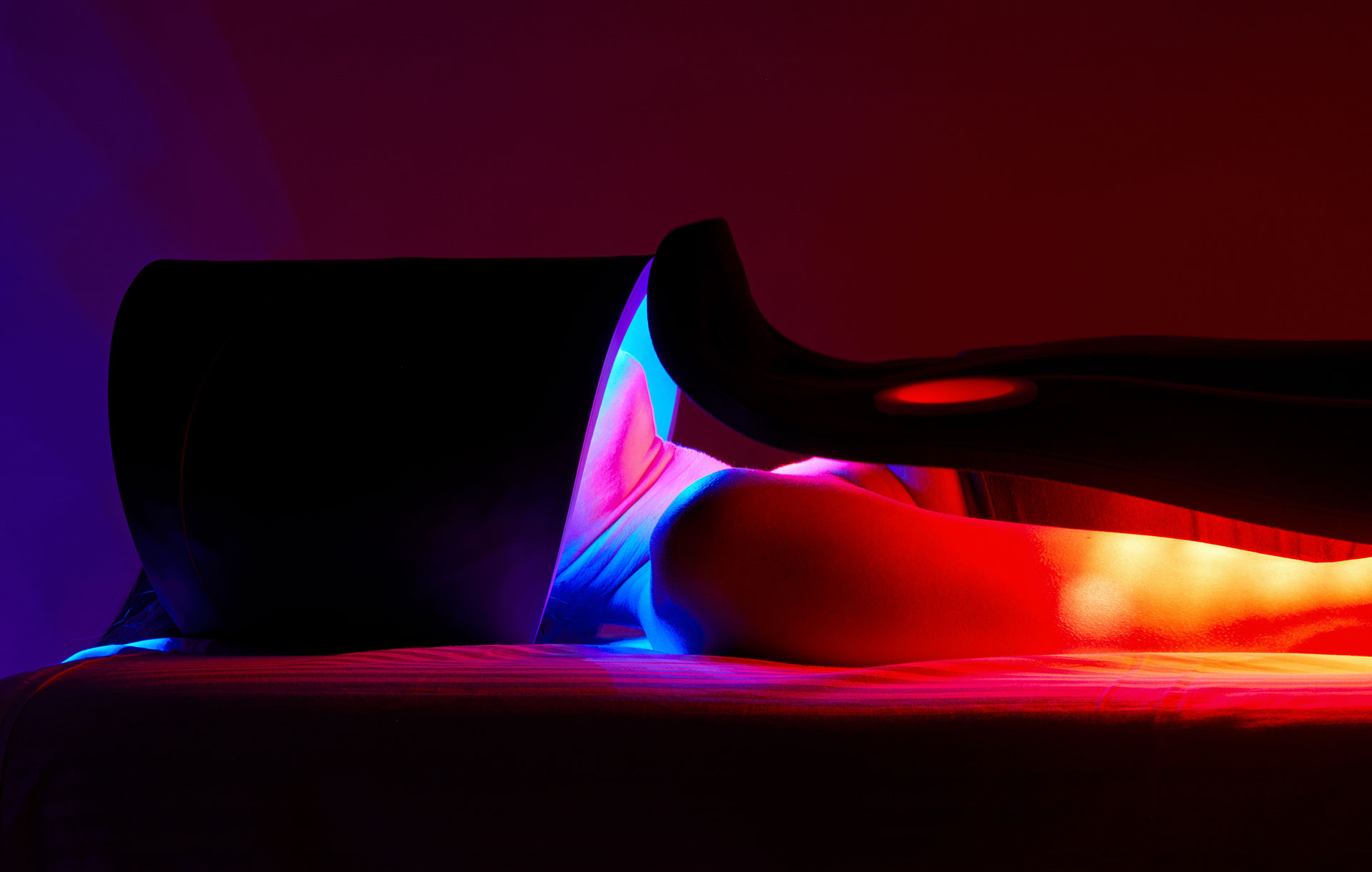
The cure for all of your skin woes
From fad diets to the latest age reversing products and procedures, anti-aging trends come and go. One trend that never goes out of style is the desire for clear, healthy, and youthful-looking skin. And it isn’t just the celebrities looking for the fountain of youth, we all want to age gracefully and look our best. There are a variety of environmental and genetic factors that can lead to skin damage and hyperpigmentation. Just a little research on prevention and treatment options can become overwhelming pretty quickly. Many estheticians don’t realize just how effective LED light therapy can be in dealing with hyperpigmentation and other skin issues.
CAUSES AND CONCERNS OF HYPERPIGMENTATION
Melanin, a natural skin pigment, plays an essential role in preventing ultraviolet light-induced skin damage. Stimulation of the melanocytes results in the release of tyrosinase, an enzyme that converts tyrosine through chemical reactions to produce melanin. The dendrites then transport the melanin to the keratinocytes. The deposition of melanin is determined by whether these dendrites are epidermal or dermal. Hyperpigmentation results from an accelerated increase in the production of melanin by the melanocytes. Multiple factors increase the incidence of pigmentation, including ultraviolet radiation, hormonal alterations, genetic predispositions, ethnicity, and inflammatory processes. We are now increasingly more aware of the negative impact of environmental pollution and its role in pigment. Constant exposure creates a low-grade inflammatory reaction in the skin, leading to an increase in sensitive, reactive skin, pigmented lesions, and uneven skin tone.
[ihc-hide-content ihc_mb_type=”show” ihc_mb_who=”2,4,5,6,7″ ihc_mb_template=”3″ ]
Given the negative psychosocial impact that hyperpigmentation has on individuals, it is one of the major concerns presented in clinics, salons, and spas. There are various modalities available to treat hyperpigmentation, and which method will achieve the best result is dependent on the causative factor. A detailed skin assessment, including medical history and social lifestyle, will guide the specialist to the appropriate and effective pathway. The use of a Woods lamp or skin analysis device will help in identifying both epidermal and dermal pigment. This is vital when managing client expectations in terms of outcome, resolution, and long-term management. Topical treatments and a series of chemical peels will lighten and lift epidermal pigment. Dermal pigment, however, is more challenging.
IMPACT OF LED TREATMENT
Laser therapy is known to be effective in treating hyperpigmentation resistant to topical treatments and chemical peeling. Yet, it’s not just a matter of lifting and lightening the pigment but also regulating and reducing the amount of melanin production and transport to maintain a longer-lasting result. With this in mind, would the same principle apply when using light-emitting diode (LED) therapy?
There is evidence that LED therapy with visible and invisible wavelengths has positive effects in improving ultraviolet damaged skin, including photoaging and actinic keratosis. Red (660 nanometers) and near-infrared light (880 nanometers) effectively reduce erythema and inflammatory reactions in the deeper tissues. As melanin production increases with overexposure to ultraviolet irradiation and inflammatory reactions, the use of red and infrared LED reduces the melanocytes’ stimulatory effects. At this time, there is no scientific evidence to support the use of green wavelengths for the treatment of pigmentation. Green is a short wavelength incapable of reaching the target cells in the dermis.
When appropriately utilized, proven red and near-infrared wavelengths can combat the signs of aging. These specific wavelengths of light energy are clinically verified to enhance the body’s natural ability to generate collagen and elastin by activating the fibroblast cells. And the research available shows the positive impact of LED light therapy and its effectiveness in dealing with hyperpigmentation. Studies by Lee et al (2007) demonstrated a significant decrease in melanin production with a 90% decrease in inflammation and pigmentation after repeated blue and red LED sessions. Kim et al (2012) analyzed various wavelengths from 415 to 940 nanommeters and reported a significant decrease in tyrosinase with infrared LED with wavelengths at 830, 850, and 940 nanometers.
MELASMA
Melasma is a type of pigmentation that can show up as asymmetrical, mottled, facial pigmentation, and appears mostly on the parts of the face exposed to the sun, such as the cheeks, forehead, and chin. It is reported most frequently among people with darker skin tones, with up to one-third of sufferers having a genetic predisposition. This emotionally distressing and chronic condition is challenging to treat. However, a recent pilot split-face study by dermatologist Dr. Daniel Barolet showed benefits when LED light therapy is combined with microdermabrasion for a two-pronged approach.
In this study, an initial “mobilization phase” using microdermabrasion was utilized to “open an epidermal window” for the subsequent delivery and absorption of pulsed LED light energy to downregulate highly metabolic dermal melanocytes in melasma. The microdermabrasion was used before the LED treatment to remove the stratum corneum to reduce undesirable deflection of the light energy and to activate a mild tissue response mechanically.
The microdermabrasion treatment was followed by an LED treatment using a near-infrared wavelength. This protocol was performed weekly for eight consecutive weeks. The split-face study results showed statistically significant pigment reduction results on the side treated with pulsed light therapy.
The inhibition of tyrosinase dramatically reduces melanin production. Reducing the inflammation at the melanocytes reduces melanin transfer with the consequence of a reduction in pigmentation. Hyperpigmentation remains a challenging skin disorder that requires patience and commitment from both the skincare specialist and the client. No single modality will provide the resolution. LED, however, is a safe, easy-to-use, risk-free, and highly effective additional tool in managing this condition. Just safe, natural wavelengths of effective, proven light energy.
[/ihc-hide-content]












